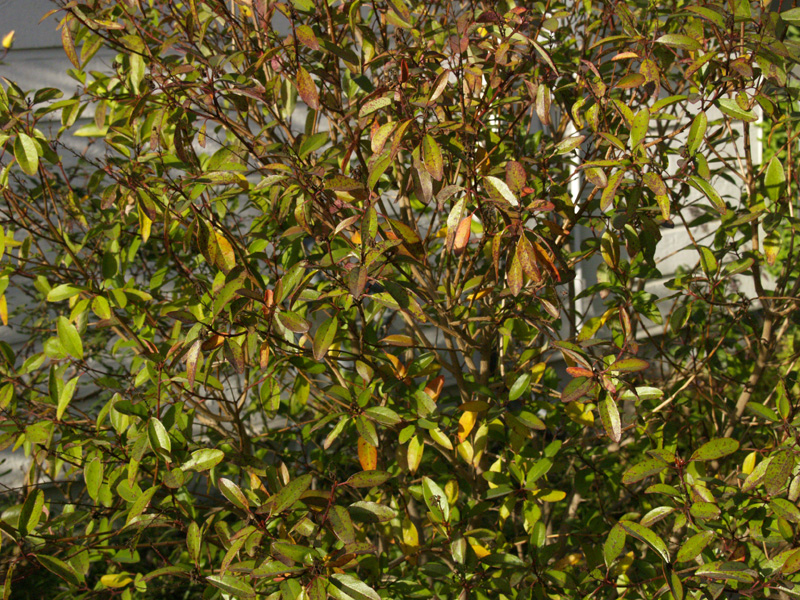January 26, 2012
When to prune|No lawn designs|oak wilt
We’re all just itching to prune!

I love the winter cleanup to start the slate clean, but I won’t be pruning that thryallis just yet. Others, like Salvia greggii, should be pruned now. Whatever I prune, as I work around each plant, I scrabble up the old mulch to “de-clunk” it a bit. I snag weeds and tree seedlings in hiding. Take along some pliers to pull out stubborn (small) tree seedlings! It’s also the perfect time to add compost and fresh mulch while things are cut back.

But what can we prune and when? This winter’s warmth makes it especially hard. When bees and butterflies are going for flowers on our Salvia greggiis, what to do?

My technique is to whack low to the ground the ones that aren’t flowering. For others, I work my way around them. It looks odd for a few weeks, but we’ll get a winter nip and then I cut them all back. If you’re too kind and don’t do it, the plants will look straggly and won’t produce as many flowers later, since they bloom on new growth.
Even though now is the perfect time to shape your rosemary plants, it’s hard to do it when bees are going for the flowers. So again, I do selective shaping.

I’ve left some of the asters in case little birds want their seeds. Others I’ve snipped to their rosettes to show off the bee-loving bulbs coming up underneath.

This one’s against Artemisia ‘Powis Castle.’ I couldn’t stand the artemisia’s legginess, and snipped it good. Normally I’d wait until mid-February or later (depending on weather) but I went for it since it was sending out new leaf buds. If we hit 17 degrees in a few weeks, I’ll be clipping again.
This week, Daphne answers a few questions about pruning. Here’s one reason to hold off on a few things: “Those above-ground plant parts, which may look completely lifeless, have sugars and other plant nutrients in them that may take a while to make their way down into the roots. They also serve as a small amount of protection to the soil around the roots of the plant, and those are two reasons why it’s really best to leave those unsightly “sticks” alone until we are into late winter. Another reason is that pruning stimulates growth. And when a plant is trying to “go to sleep” for the winter, you need to go ahead and let it do that.”
So, I’m leaving that thryallis alone for now. Also, I’m not touching the shrimp plants.

And, I’m following Daphne’s advice: don’t prune evergreens until we’re closer to the last frost date. I’ll wait until at least March 1 for them and later for the shrimp and thryallis, again depending on the forecast. More on pruning next week!
It IS time to prune red oaks and live oaks that are susceptible to oak wilt.

This week, Certified Arborist Guy LeBlanc has tips on how to prevent oak wilt, and what we can prune after the February cut-off date. Get his latest guidelines on oak wilt pruning.
Since nature “pruned” our lawns for us, this week Tom meets with David Meeker from Porthole Design for design ideas to dump the grass.

Here’s one of his front yard designs. I’m in love.

See how he turned the routine into captivation for the family and wildlife.



Here’s a spot under consideration.

David’s designed two renditions (that include the backyard). It allows for edibles and ornamentals. Once you have a design, you can fill with your choice of plants. Here’s the circular concept.

This one is more straight on.

Which would you do? That’s part of the fun! Are you a circular person or a straight on person? Or do you want a little of each? It’s your garden, so get some marking paint and just imagine!
On tour, visit Helen Roberts, who enriches her life with art from every viewpoint. Her garden, named The Muses, is a perpetual gallery that mounts a new exhibit every season. With designer Bridget Lane, Helen chose a no-lawn garden that respects her land and encourages the wildlife that performs every day.
See you next week! Linda
tags:

